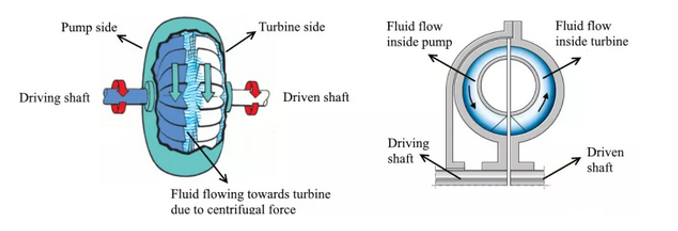What are Couplings? Types of Couplings and their Application
The term coupling, suggest that something is being coupled. Couplings are mechanical devices for transmitting torque from a shaft to another. This post takes a closer look at the different types of couplings and their applications.
Why are Couplings so Important?
In machines, power is transmitted using the arrangement of drives or gears. However, these gears have to be connected using shafts that are parallel. Couplings are used when these shafts are placed in a straight line and then connected end-to-end to transmit torque.
A Closer Look at the General Applications of Couplings
Couplings have many applications, especially in the industrial settings. Here are some of these use cases.
- Helping to transmit power from one drift shaft to another.
- Coupling two components that are manufactured separately. Example, a generator motor, and output motor shaft.
- Couplings can be used to introduce extra flexibility when transmitting torque if you have restrictions.
- Introducing additional protection against overloads.
- Reducing the transmission of shock loads from shaft to another.
Types of Couplings
Now that you know what couplings are and their uses, it is time to look at the different types ideal for your machine and industry.
Sleeve or Muff Coupling

Sleeve couplings are simply hollow cylinders or pipes. They are manufactured with the diameter of the shaft in mind to ensure that the shaft fits well into the sleeve. The driven and driver shafts are inserted on each side of the muff. Then, they have holes used to firmly hold them together so that they rotate as one to transfer torque.
Note that the sleeve couplings are mainly used where the shafts do not require any alignment. Besides, the load capacity should be light to medium duty.
Split Muff Coupling
 Unlike the sleeve coupling that is made of a single part, the split muffs are designed with different parts. Their muffs are semi-cylindrical in shape to makes them easily fit in both shafts. The threaded holes on the muffs allow you to join the shafts and join using studs or bolts. One notable thing about the split muff couplings is that they can easily be assembled or disassembled without altering the shaft position.
Unlike the sleeve coupling that is made of a single part, the split muffs are designed with different parts. Their muffs are semi-cylindrical in shape to makes them easily fit in both shafts. The threaded holes on the muffs allow you to join the shafts and join using studs or bolts. One notable thing about the split muff couplings is that they can easily be assembled or disassembled without altering the shaft position.
The split muffs are ideal for medium to heavy-duty loads that have moderate speed.
Flange Coupling
 This is another easy to manufacturer coupling that operates like the sleeve coupling. However, it features flanges on either end of the two sleeves. The flanges have threaded holes for bolting. A key section is also provided on the shafts and hub to prevent slipping. To ensure that the hub does not slide backward, you are required to use a tapered key.
This is another easy to manufacturer coupling that operates like the sleeve coupling. However, it features flanges on either end of the two sleeves. The flanges have threaded holes for bolting. A key section is also provided on the shafts and hub to prevent slipping. To ensure that the hub does not slide backward, you are required to use a tapered key.
Flange couplings are mainly used for medium to heavy-duty industrial applications.
Bush Pin type Flexible Coupling
 This coupling is an improvement of the flange model. The main difference between them is that this model uses rubber bushings. These bushings are designed to ensure that the bolts/studs fit perfectly inside the provided holes.
This coupling is an improvement of the flange model. The main difference between them is that this model uses rubber bushings. These bushings are designed to ensure that the bolts/studs fit perfectly inside the provided holes.
The benefit of using the bushings is that they make the coupling flexible so that it can work even with misaligned shafts. The bushings designed of rubber provide some level of flexibility. They also help to absorb some vibrations.
This type of coupling is used where there is little parallel or axial misalignment. They are very common in medium duty applications, especially in the electronic motor and machines.
 This type of coupling is made of two parts, a turbine, and a pump. The two sections have blades that are fitted at an angle. The pump is positioned on the end of the driver shaft, and the turbine is positioned on the shaft being driven.
This type of coupling is made of two parts, a turbine, and a pump. The two sections have blades that are fitted at an angle. The pump is positioned on the end of the driver shaft, and the turbine is positioned on the shaft being driven.
To operate, fluid gets into the pump via the center when the driving shaft rotates because of centrifugal force. An extra part referred to as a reactor can be introduced between the turbine and the pump. Interestingly, the reactor serves as a torque converter and operates as an alternative to manual clutch in automatic transmission systems.
This type of coupling is applied mainly in industrial and marine applications where controlled startup of transmission is crucial.
From the above demonstration, it is clear that couplings can actually be used in many joints for transmitting torque. The secret to getting it right with couplings is ensuring to understand your system and selecting the ideal option for it.
